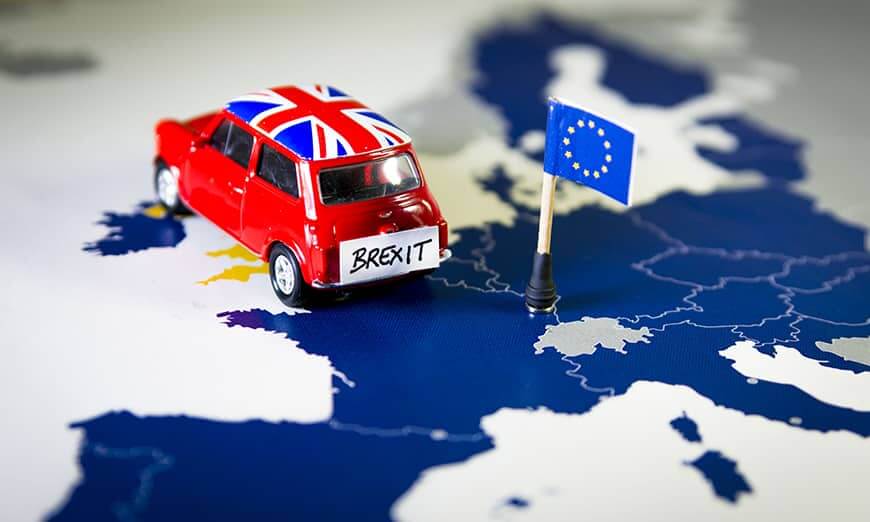
Your Complete Guide to the Brexit Saga
The Brexit saga has been among the most headline-breaking ongoing event of the year. Ever since the 2016 referendum, the UK rests in the grips of political uncertainty and deadlock. Not caught up? Here’s your complete guide to understanding the whole saga.
Understanding the full extent of the Brexit is not an easy thing. Much has been said about it, and a lot has happened since the 2016 referendum.
For those unfamiliar with the fiasco, this article will serve as a comprehensive roadmap.
We’ll start talking about the European Union and how it works to give context on the problems that surrounded the matter for years.
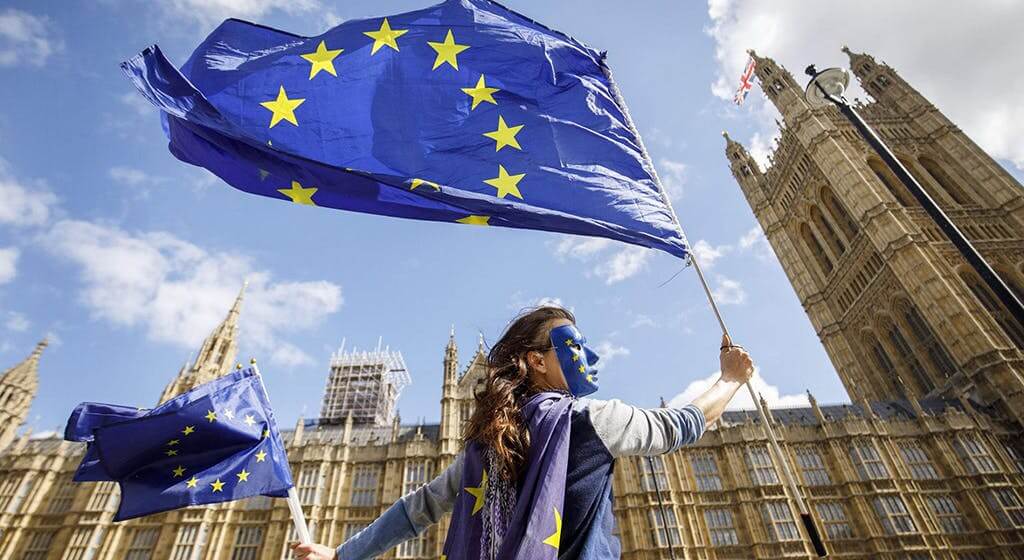
What is the EU, and How does it Work?
The European Union came into existence after the catastrophic Second World War.
The European countries wanted to ensure that trade and economic cooperation will go smoothly. They wanted to avoid war.
Including the United Kingdom, the EU has 28 member states, and 19 of those use the euro as currency.
The Three Branches of the EU Government
The European Union has three main governmental branches:
- The European Council sets the group’s political agenda. Heads of governments make up this institution.
- The European Parliament creates laws as members represent the EU citizens who vote for them.
- The European Commission is the Union’s executive branch. It proposes legislation, implements decisions, and manages the EU’s businesses.
This way, the European Union often acts as a single entity, although the countries within it still have large autonomy over their affairs.
Why Does the UK Want to Leave?
The UK and the EU have had a pretty rocky relationship even in the early days of the Union.
Many in the UK have been skeptical about the EU.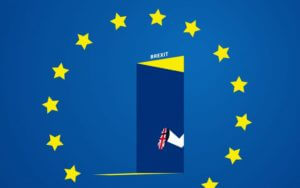
This skeptical became more obvious during Margaret Thatcher’s premiership in the 1980s.
In a nutshell, the UK found itself stuck between wanting more autonomy and the need for access to European markets.
Divided Parties
As one can expect, this skepticism triggered divisions within the UK government.
Eurosceptic and Europhile factions appeared.
As a result, the ruling Conservative party was in the middle. The same also happened in the opposition Labour party.
The 2016 Brexit Referendum
To address this issue, the country conducted a public vote on June 23, 2016.
To address this issue, the country conducted a public vote on June 23, 2016.
The issue: should the UK stay or go?
The results: 52% wanted to leave the EU, while 48% wanted to stay.
Turnout was very high at 72%–that’s equivalent to more than 30 million people voting.
Of course, the vote was merely the start of a long process. Negotiations needed to happen, and there’s a lot of that.
The British exit from the EU— Brexit—was supposed to happen on March 29, 2019.
But, as it turned out, it wasn’t going to be that easy or quick.

Theresa May and Brexit
As we have mentioned, the Conservative party has been divided because of Brexit.
So, it was not surprising to find that then-Prime Minister Theresa May struggled with the “divorce deal.”
To be fair, the proposal required compromise from both sides.
However, her so-called “red lines” on the limits of EU power triggered dissent among her party members.
Amid the fiasco and division, several officials resigned from their posts.
Some of them even suggested the UK to leave without a deal.
As MPs repeatedly rejected May’s Brexit divorce deal, the deadline was eventually pushed back to October 31, 2019.
But why was the deal rejected? What were the problems? To answer this, we’ll look at what the deal says.

Key Points of the Brexit Withdrawal Agreement
The deal covers some very important points for Brexit:
- The UK will pay the EU to break the partnership. That’s 39 billion pounds.
- What will happen to EU citizens living in the UK and vice versa?
- How will the UK and EU avoid a physical border between Northern Ireland and the Republic of Ireland?
Of these three, the last one is the most contentious. But we’ll get to that shortly.
The deal includes a transition period in which the UK and EU will agree to a trade deal, and businesses will adjust.
For the longer term, the Political Declaration draws up the future relationship between the two.
In November 2018, Brussels approved the deal. However, the British MPs didn’t.
They rejected the deal multiple times. On January 15, March 12, and March 20, which was the original Brexit deadline.
The deadline was then pushed back to October 31.
UK’s Payment to the EU
Among the many objections to the divorce, the deal has something to do with money.
See, as we’ve mentioned, the UK has to pay the EU billions for leaving. That’s estimated to be a net 10.8 billion pounds.
And the UK agreed to pay the same amount until the transition period finishes on the last day of December 2020.
There is a clause in the deal that says the transition period could be extended if no trade deal is reached.
That can only happen once. However, of course, the payments from the UK to the EU will continue during the extension.
Laws and Regulations
As you can see, the key issues surrounding Brexit isn’t more about trade but more about the political ramifications of the exit.
In the European Union, the European Court of Justice has the final say in disputes between people and governments.
For Brexit supporters, the UK should have the final word.
May herself said that they were not going to return to ECJ jurisdictions.
However, during the transition, the UK has to follow the EU rules and abide by the ECJ.
Opponents of the deal said this did not make the UK the rule maker.
Also, if the transition period extends, the UK will be under ECJ jurisdiction for longer.
More importantly, though, the agreement committed to keeping “equivalent standards” with EU rules.
In other words, the UK would be imitating EU policies in terms of social policy, employment, and environment.
For MP Mark Francois, this commitment meant the UK “would continue to take EU law.”
The Irish Backstop: Explained
Now we’re at what is arguably the most important issue with the divorce agreement: the Irish Backstop.
In a nutshell, the UK doesn’t want any hard b order separating Northern Ireland and the Republic of Ireland.
order separating Northern Ireland and the Republic of Ireland.
However, the UK is also leaving the EU single market and the customs union.
The Invisible Border
The international border between Northern Ireland and the Republic of Ireland is about 310 miles in length.
No infrastructure exists that separates the two, which means the entire border is a crossing point.
This invisible border came about because of the 1998 Good Friday Agreement.
The Good Friday Agreement removed security checkpoints from the border, making it invisible.
That’s the political side of the matter. Then, there’s the economic side.
Intertwined Economies
Every day, massive amounts of goods and services cross the invisible border.
At least 30,000 people cross the border daily to go to work.
Meanwhile, people’s movement falls under the Common Travel Area deal between the UK and Ireland. This CTA predates the EU.
Both Ireland and the UK want to keep by CTA in place. However, it doesn’t solve the question of a hard border.
Despite Brexit Staying in the Customs Union
Again, the UK wants out of the EU single market and the customs union.
The relationship between the UK and Ireland depends largely on their joint membership in the EU.
Once the UK leaves the EU, everything could change. Border checks may appear before the emergence of a harder border.
And it appears that one way to avoid that is for Northern Ireland to stay in the EU single market and customs union.
If that happens, where would the customs border be?
Customs Border in the Irish Sea
The customs border would then be between Great Britain and Northern Ireland. Effectively, it becomes an internal border.
Of course, the Unionist political allies, the DUP, and the UK government wouldn’t allow such setup. 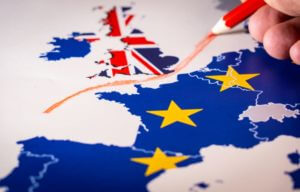
If the UK, on the other hand, declares an open border, it would need to do it for the world, as per WTO rules.
What would happen, then? Cheap imports will flood the UK economy.
Truly, the Irish backstop has so far stopped Brexit from happening because of its divisive nature.
Theresa May’s Resignation
Theresa May has been adamant in her proposal, repeatedly facing the MPs amid the parliamentary deadlock that prevented Brexit from happening.
Three rejections and one deadline extension later, Theresa May resigned.
In her resignation speech, May reiterated her eagerness to implement what the 2016 referendum wanted.
“I feel as certain today…that in a democracy, if you give people a choice you have a duty to implement what they decide,” she said.
“It is, and will always remain, a matter of deep regret to me that I have not been able to deliver Brexit.”
In her closing speech, May, usually carrying a tough and confident demeanor, broke down and cracked.
She knew that her premiership would be remembered for her failure to deliver the electorate’s decision.

Boris Johnson’s Rise
Much has been said about May’s resignation. Truly, it was an event when it was happening.
However, the world quickly moved on and looked at the next British prime minister.
Boris Johnson is, just like the issues surrounding Brexit, divisive.
Who is he?
Johnson: Journalism
The full name is Alexander Boris de Pfeffel Johnson. Born in New York, Johnson also lived in London and Brussels before schooling in England.
He was a journalist before a politician. He has worked for The Times (1987), The Daily Telegraph (1989), and The Spectator (1994).
Afterward, he made his plunge into the Parliament.
He was the Conservative candidate for Clwyd South in the House of Commons in 1997, but he took a loss to the Labour Party.
But this loss became a way for him to be popular. He started showing up in a variety of television shows.
Johnson tried his luck again in the Parliament in 2001, and he won in the Henley-on-Thames.
He continued his journalism even as he embarked on a political career.
The problem was, sometimes, the two didn’t mix well.
Johnson had to apologize to the city of Liverpool after penning an editorial in The Spectator.
However, despite the public blunders, Johnson managed to secure his parliament seat again in 2005.
Political Career
Johnson became mayor of London in 2008 by a narrow victory. But he stepped down as MP early in June of that year to fulfill a campaign promise.
In 2012, he won again as London mayor, giving the Conservative Party a bright spot in an otherwise disappointing election.
He continued his writing career even during his political tenure, penning essays, a novel, and a historical survey.

Parliament and Brexit
Returning to the Parliament in 2015, Johnson retained his mayoral seat.
His victory in Parliament spurred speculations that he would eventually run against then-Prime Minister David Cameron.
Meanwhile, he has become a leading spokesman for the “Leave” campaign before the 2016 referendum.
Johnson faced off with Cameron, who adamantly supported Britain’s stay in the EU.
When the results came out, Cameron stepped down as PM, saying that it was his successor who should oversee the Brexit negotiations.
This time, many believed that Johnson only had to walk up to the premiership to claim it.
Deserted by Gove
Michael Gove, who was then the justice secretary, worked with Johnson in the Leave campaign.
However, before Johnson was able to announce his candidacy, Gove deserted him.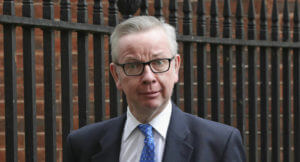
Gove said Johnson could not provide the right leadership for the task ahead.
Then, a betrayal of Shakespearean style took place: instead of supporting Johnson, Gove announced his own candidacy.
Cameron’s, Johnson’s, and Gove’s families have been close. The three have also moved up the Conservative Party’s ranks together.
Johnson withdrew his candidacy shortly after realizing he didn’t have enough support from the party.
Johnson as Foreign Secretary
Theresa May became prime minister, and she appointed Johnson as her foreign secretary.
Johnson remained foreign secretary even after May reshuffled her cabinet following the Conservatives’ loss of legislative majority.
Contradicting May
Johnson and May have not always agreed. Though both go for Brexit, Johnson has been an advocate of a hard Brexit.
May struggled to come up with the details of the withdrawal agreement.
Johnson repeatedly warned May not to relinquish the British autonomy to maintain close economic ties with the single market.
There was a time when Johnson seemed to do a 180-degree turn and supported May’s approach to Brexit.
However, after a high-profile resignation, Johnson solidified his stance against May by also tendering his resignation.
According to David Davis, who was then Brexit chief negotiator, May was “giving too much away, too easily.”
In his resignation, Johnson remarked that the Brexit “dream is dying, suffocated by needless self-doubt.”
Becoming Prime Minister
After his resignation, Johnson continued to be a critic of May’s approach.
As we have mentioned, the Parliament has rejected May’s withdrawal agreement three times.
May was unable to win support from her own party, unable to convince the opposition, and was criticized by more people in her own party.
There was only so much that a prime minister could take. It was May’s turn to resign.
Johnson found himself among the ten candidates to replace May. The number eventually narrowed down to four.
The fight was between Boris Johnson, Michael Gove, Jeremy Hunt (who replaced Johnson as foreign secretary), and Sajid Javid (who was the home secretary).
Johnson’s election campaign revolved around the promise to take the UK out of the EU “come what may.”
Gove and Javid fell by the wayside, leaving Johnson and Hunt to compete.
When the results came in, they showed Johnson raked 66% of the vote, while Hunt gained only 34%.
The United Kingdom got its new prime minister.
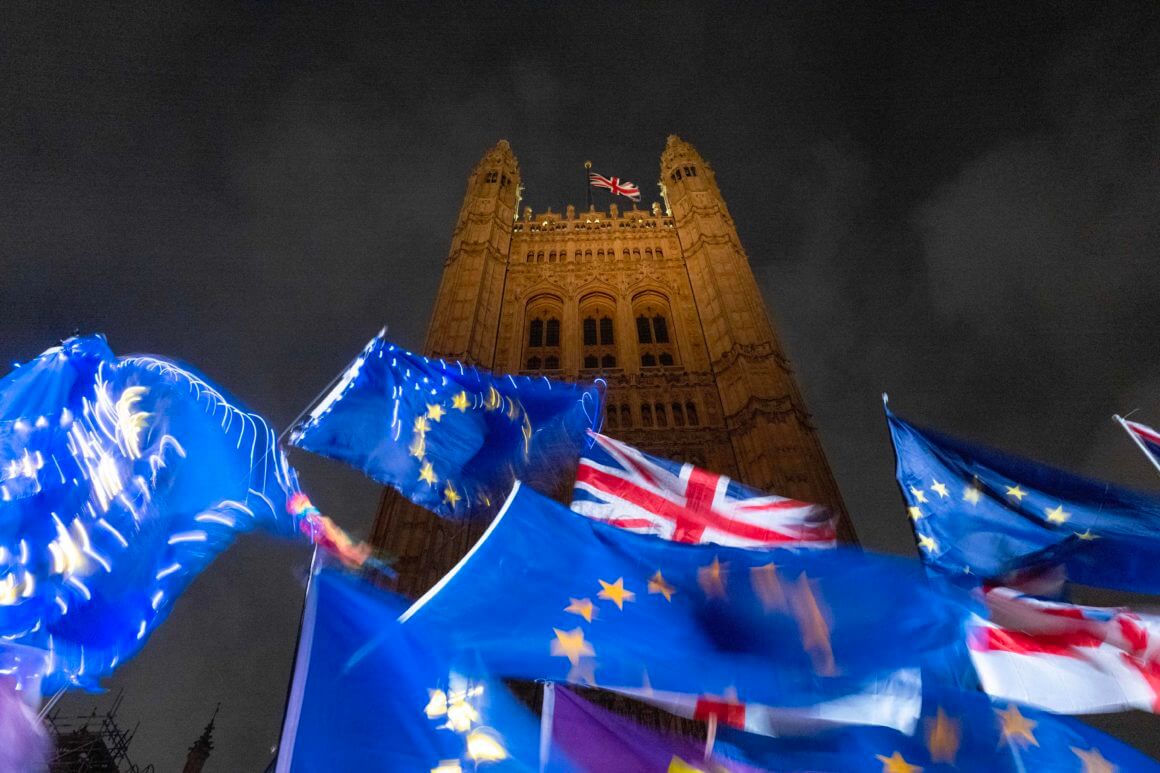
What’s the Big Deal?
Upon taking over the premiership, Johnson renegotiated parts of May’s deal.
Among the changes he put was the replacement of the backstop.
Instead of a backstop, a new customs arrangement will be in place.
Not long after his victory, Johnson managed to secure the European Union’s consent to his new deal.
The New Deal
The new deal is basically the same deal that May offered, except for the contentious backstop.
With the new deal, the UK will pull out of the EU customs union. Leaving it means the UK can strike deals with other countries.
There will be a customs border between the two Irelands. Northern Ireland will stay in the UK, while the Republic will stay in the EU.
However, there won’t be any checks on that border.
The actual checks will be on the border between Great Britain and the Irish island.
Goods will be checked “points of entry” into Northern Ireland.
Goods coming from Britain to Northern Ireland will pay taxes if they are “at-risk” of moving into the Republic of Ireland.
The UK will refund the taxes if the goods don’t end up in the Republic of Ireland.
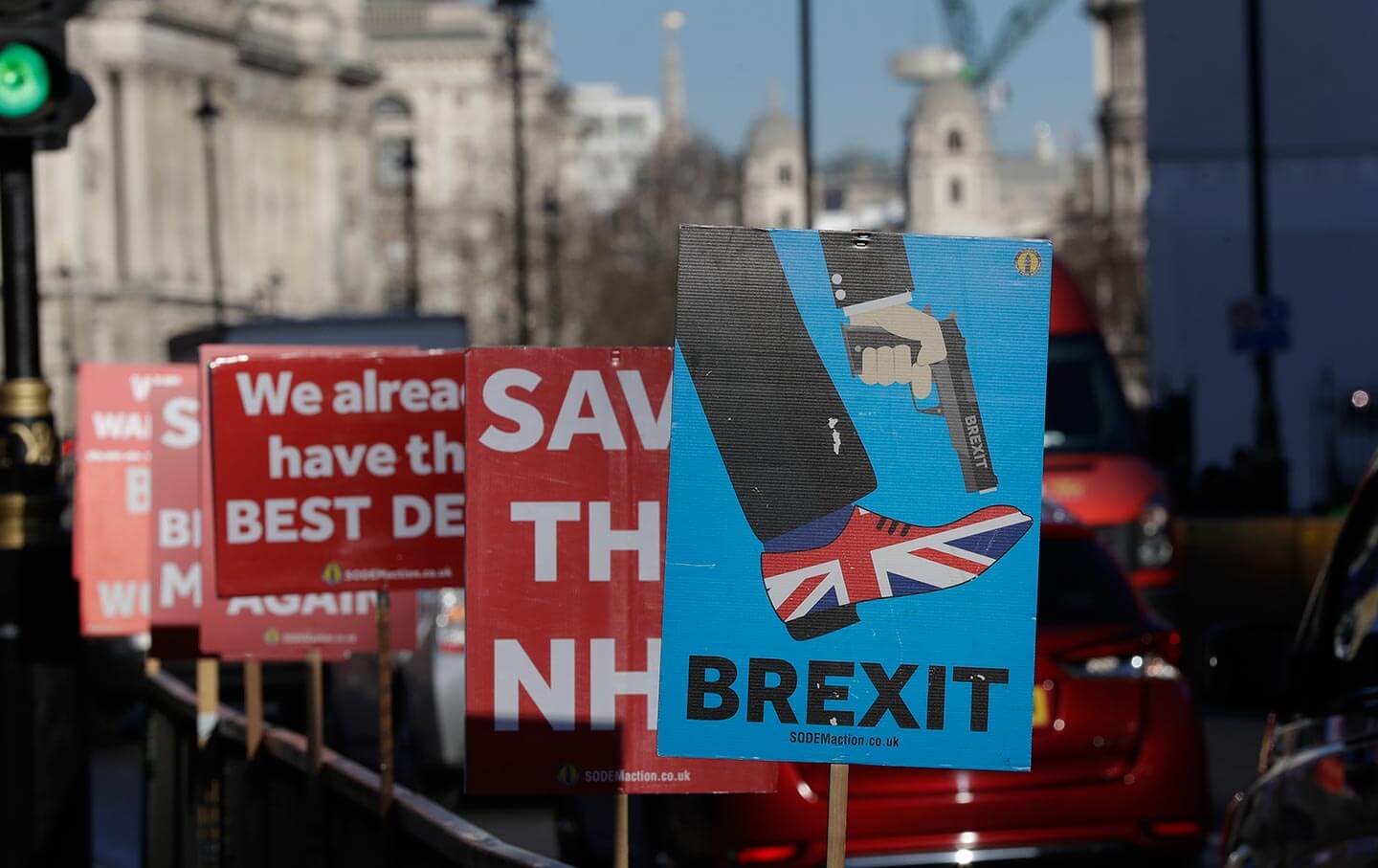
Brexit Product Regulations
As for labeling and manufacturing processes, Northern Ireland will still follow EU rules instead of UK policies.
This setup means no checks on goods between Northern Ireland and the Republic.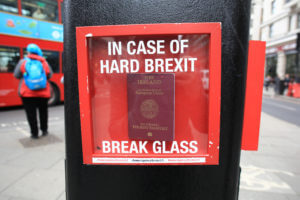
But it will add further checks between Northern Ireland and the rest of the UK.
Assembly Vote from Northern Ireland
And as we’ve discussed above, the UK does not want to treat Northern Ireland as a separate state.
As a result, the new deal gives an Assembly vote for the new arrangements.
The vote will happen four years after the end of the transition period until the end of 2020.
If the Assembly votes against the new setup, it will stop applying for two years.
During those two years, the joint committee would make recommendations about the situation.
If the Assembly votes to continue the current set up by a simple majority, the arrangement will apply for four more years.
If the vote has “cross-community support,” the arrangement will apply for eight years instead.
Brexit VAT Policies
The new deal also says that Northern Ireland will still follow the EU’s value-added tax (VAT).
However, the tax will only apply to goods, not services.
It also allows Northern Ireland to have different VAT rates to the rest of the UK.
Meanwhile, Northern Ireland will also get the same VAT rates on specific goods as the Republic.
The rest of the deal has stayed the same.
Johnson vs. Parliament
But even as a new deal was in place, Johnson still had to convince the parliament to approve it.
And, remember, he has said that he would take the UK out of the EU “come what may.”
And a hard, no-deal Brexit was something everybody from the Labour Party to Lib Dems wants to avoid.
For Johnson, one way to break the political deadlock was to have a general election. The vote could give him a majority government, allowing him to maneuver Brexit according to his liking.
However, the House of Commons rejected this. They want to get a no-deal Brexit possibility off the table first.
Johnson had struggled with the Parliament further when it enacted a measure created to stop Britain from crashing out of the EU on the October 31 deadline without a deal.
This measure turned into a law, which requires the government to ask the EU for a three-month delay if they haven’t agreed on a deal by October 19.

Prorogued Parliament
Threatened by a vote of no confidence and the opponents of a no-deal Brexit, Johnson made a bold move.
He announced that he had requested the Queen to prorogue—suspend—the parliament until October 14.
The parliament has been in session for more than two years due to the protracted nature of Brexit.
Now, it faced the threat of delay in resumption, which means it would extremely short time to legislate on the Brexit deal.
It spurred anger and outrage among policymakers, to say the least.
Johnson Rebuffed
Critics argued that Johnson was trying to limit the debate for legislative action.
To counter Johnson, opponents of a no-deal Brexit came together for a vote that allowed the House of Commons to take the government’s control of the agenda temporarily.
The vote 328-301, which was a crushing defeat for Johnson.
The prime minister retaliated by expelling the 21 rebellious Conservative MPs that joined the vote.
This vote eventually led to the measure as mentioned above that required Johnson to ask for a delay from the EU.
UK Supreme Court Rules Prorogation Unlawful
Circling back to the suspension of parliament, the UK Supreme Court had the task to rule whether Johnson’s action of asking the Queen to suspend the parliament amid an intense and crucial time for the government was unlawful.
It was “void and of no effect,” according to the Court.
The session had technically continued, and lawmakers were able to return to both chambers.
Johnson, on the other hand, said he didn’t agree with the Court’s decision.
Corbyn Agrees to Early Elections
Now, because a no-deal Brexit was already off the table, Corbyn finally agreed to an early election. The schedule was December 12.
Conservatives Win the Elections
In the runup to the election date, polls showed that Johnson and his Conservative Party were leading.
That is in spite of the fact that he probably had lost the support of the Unionist party because of his Irish sea border approach.
When the votes were finally counted, the results showed that Johnson took the victory more decisively than everyone anticipated.
The Conservatives took 365 seats, increasing its hold in the House of Commons by 47 seats.
And with this majority government, British Prime Minister Boris Johnson can more easily drive Brexit towards his preferred direction.
Post-Election Victory
With this victory, Boris Johnson had a lot in his to-do list. The current deadline for Brexit was on January 31.
Now that there was a majority of Tories in the House of Commons, Johnson could much easily have his withdrawal agreement passed.
The Withdrawal Bill would enter the House of Commons for a second reading. MPs would be debating about the bill’s principles.
After the second reading, the bill would go to the committee stage, where a detailed examination would take place.
After the committee stage, the bill would return to the House of Commons for the report stage.
At this stage, further amendments could happen. After that, the third reading would commence.
After the third reading, the Bill would go to the House, and all the stages would be repeated for the Lords.
Once the bill passed, the Queen would receive the bill to get the royal assent.
This process will likely finish by January 31, the current deadline.
Thanks to the majority Johnson gained, this would be straightforward.
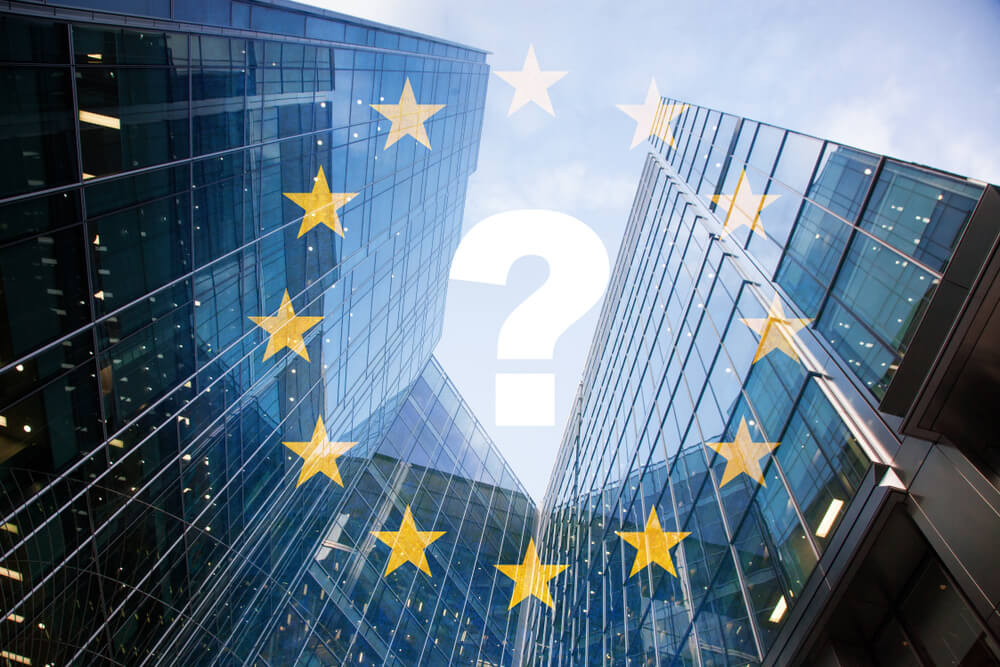
What Lies Ahead of Brexit
With this victory, Boris Johnson has a lot in his to-do list. The current deadline for Brexit is on January 31.
Now that there is a majority of Tories in the House of Commons, Johnson can much easily have his withdrawal agreement passed.
The Withdrawal Bill will enter the House of Common for second reading. MPs will be debating about the bill’s principles.
After the second reading, the bill will go to the committee stage, where a detailed examination takes place.
This is where amendments can happen.
After the committee stage, the bill will return to the House of Commons for the report stage.
At this stage, further amendments can happen. After that, the third reading will commence.
After the third reading, the bill goes to the House, and all the stages are repeated for the Lords.
Once the bill has passed, the Queen will receive the bill to get the royal assent.
This process will likely finish by January 31, the current deadline. Thanks to the majority Johnson gained, this will be straightforward.
After that, trade negotiations with the EU will commence. This is the transition period.
After the ratification by December 2020, the UK will become independent of the EU, with all the clauses of the deal in effect.
If the December 2020 deadline does not ratify the trade deal, the UK will either extend the transition period or crash out of the EU without a deal.
Britain Finally Exits
After the election victory, Johnson reiterated his intentions to finish the Brexit agreement by the end of 2020.
New European Commission Ursula von der Leyen met with him in Downing Street for talks.
Von der Leyen said the deadline was “very, very tight,” adding that it was impossible to agree on everything in time for the set deadline.
Still, Johnson was adamant.
On January 9, 2020, Johnson got his Brexit deal through the House of Commons. The Withdrawal Agreement gained a majority of 99.
The Bill then headed to the House of Lords, which then ratified the Withdrawal Agreement.
And on January 31, 2020, after years of back-and-forth negotiations, elections, threats, and change of leaders, Brexit finally happened.
At 11 pm, with the Union flag in Parliament Square and with a special Cabinet meeting outside London, the countdown ended. The United Kingdom was now out of the European Union.
What Lies Ahead
Still, the UK will have to negotiate with the EU for the terms of trade.
This is the transition period.
After the ratification by December 2020, the UK will become independent of the EU, with all the clauses of the deal in effect.
If the December 2020 deadline does not ratify the trade deal, the UK will either extend the transition period or crash out of the EU without a deal.
-
Support
-
Platform
-
Spread
-
Trading Instrument




